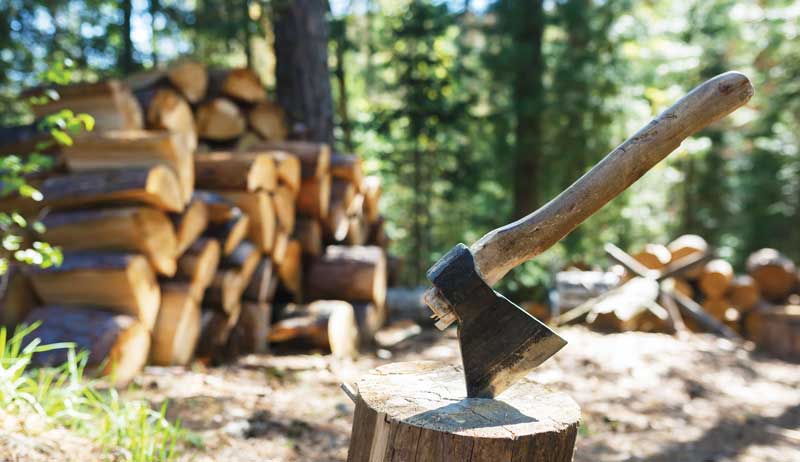A fire crackles in the woodstove that’s nestled in the corner of the dining room. The smell of a wood fire drifts through the house, along with the scent of freshly cut pine boughs and drying orange slices. A small stack of firewood split logs sits neatly beside the stove, waiting to be added once the fire begins to die down.
Whether it’s for the radiating heat that can warm any cold body or the extra sense of security that a back-up heat source offers, investing in firewood heat for your home can be beneficial and enjoyable.
Before you dive right in and begin chopping down the shade tree in the backyard for firewood, you need to be aware of a few basic things, not only about the type of firewood you use to heat with but also how to safely cut it down and store it.
Wood Basics
The type of firewood you choose to burn might vary from region to region and depend on what trees are plentiful nearby. Around my area in central Kansas, Osage orange (hedge) seems to be a popular choice. Considered a hard wood, when burned after curing (drying), it produces an excellent, long-lasting heat.
Retired fish and wildlife expert Clarke Dirks has been cutting and heating with firewood for years. He also burns hedge but prefers to let it dry and cure about two years before use. Hedge wood can withstand this long curing period. It’s an extremely dense wood and resistant to bugs and rot.
Dirks points out that other types of firewood wouldn’t need to cure (and wouldn’t last) as long as hedge wood before burning, though. For example, species such as cottonwood, elm and hackberry could be dried in less time (probably six to eight months), while oak should be left to dry for a full year.
A general tip Dirks shares is that lighter woods should be cured for at least eight months, while hard firewoods should spend at least 12 months drying. For more information on how to choose which type of wood would work best for you, study the BTU ratings for the different types. This will tell you how much heat a cord of wood would produce. Check out the Utah State Forestry Extension chart online.
Chainsaw Basics
While an axe will never run low on gas, chainsaws offer a great way to cut wood much more quickly and efficiently. When well maintained and used safely, you’ll have a stack of firewood piled up before you know it.
Make sure the saw you choose to use for the job is adequately sized for you and the tree. Avoid something that is so large and heavy that you will tire quickly just holding it.
If looking to purchase a used saw, check on the following before handing over the money.
- Observe overall signs of wear.
- Notice how faded and scratched up the plastic is.
- Look for…

